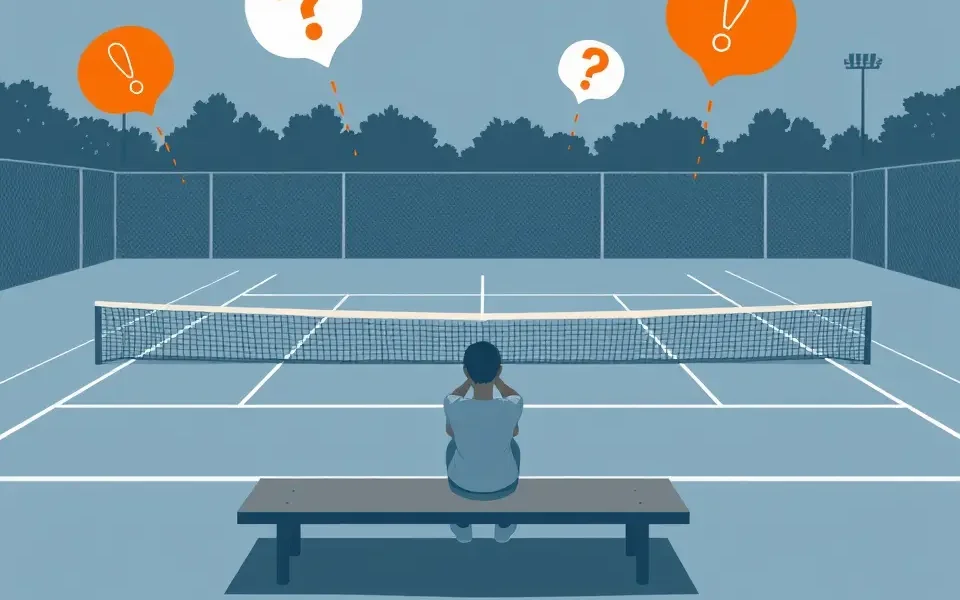Andy Roddick, the former US Open champion and world number one, recently suggested that Jannik Sinner’s break from tennis, albeit controversial, could set a new trend in the sport. This raises important questions about the demanding nature of professional tennis, the increasing awareness of mental and physical well-being, and the future of player scheduling.
The Context: Sinner’s “Break”
Jannik Sinner, currently ranked world number one, has been absent from the tour due to a suspension. The Italian tested positive for clostebol in March 2024, leading to a three-month ban agreed upon with the World Anti-Doping Agency (WADA). While this suspension was not a voluntary break for mental or physical recovery, its timing has been a subject of discussion.
The suspension conveniently coincided with a relatively less demanding part of the ATP calendar, allowing Sinner to miss the Indian Wells and Miami Open. He is scheduled to return for the Rome Masters in May. This timing has raised eyebrows, with some, including Roddick, questioning whether the situation was “strange or the best coincidence” for Sinner’s team.
Roddick’s Perspective: A Potential Trend?
Roddick, known for his outspoken opinions, has suggested that Sinner’s situation, regardless of the circumstances, might encourage other players to strategically plan breaks in their schedules. He highlights the grueling nature of the professional tennis season and the increasing pressure on players to perform consistently.
The Demands of the Tour
The professional tennis season spans almost the entire year, with players constantly traveling, training, and competing. This relentless schedule can lead to:
- Physical Exhaustion: The constant physical exertion can result in injuries and burnout.
- Mental Fatigue: The pressure to perform, coupled with the isolation of traveling, can take a toll on mental health.
- Burnout: Prolonged and intense participation can lead to a state of physical, mental, and emotional exhaustion.
The Rise of Mental Health Awareness
In recent years, there has been a growing awareness of mental health issues in tennis. Players like Naomi Osaka and Rafael Nadal have spoken openly about their struggles with anxiety, depression, and the pressure to perform.
- Naomi Osaka: Osaka brought the topic of mental health to the forefront when she withdrew from the French Open in 2021, citing anxiety and depression.
- Rafael Nadal: Nadal admitted to considering taking a mental health break a few years ago, emphasizing the importance of addressing mental well-being.
- Mardy Fish: Fish, a former top-10 player, pulled out of the 2012 US Open due to a panic attack, highlighting the intense pressure and mental health challenges faced by players.
Strategic Scheduling: A New Approach?
Given the physical and mental demands of the tour, and the increasing awareness of mental health, Roddick’s suggestion that players might start strategically planning breaks is not far-fetched. Players may consider:
- Taking time off during less critical parts of the season: To recover physically and mentally.
- Prioritizing specific tournaments: Focusing their energy on key events and skipping others.
- Working with their teams: To create schedules that balance competition with rest and recovery.
The Counterarguments: Maintaining Momentum and Rankings
While strategic breaks may seem appealing, there are also counterarguments to consider:
- Maintaining Momentum: Taking too much time off can disrupt a player’s rhythm and form.
- Rankings: Players need to compete regularly to maintain their rankings and qualify for major tournaments.
- Sponsorships: Sponsors often expect players to participate in a certain number of events.
The Importance of Balance
The key, it seems, lies in finding a balance between competition, rest, and recovery. Players need to listen to their bodies and minds and make informed decisions about their schedules.
Examples of Players and Breaks
Examining how different players have handled breaks in the past can provide valuable insights.
Roger Federer: The Master of Scheduling
Roger Federer was known for his strategic scheduling, often skipping clay-court seasons to focus on Wimbledon and the hard-court swing. This approach allowed him to prolong his career and maintain a high level of performance.
Rafael Nadal: Battling Through Injuries
Rafael Nadal has faced numerous injuries throughout his career, often taking time off to recover. Despite these breaks, he has consistently returned to the top of the game, demonstrating his resilience and determination.
Serena Williams: Balancing Career and Motherhood
Serena Williams has taken breaks from tennis to focus on motherhood, proving that it is possible to balance a demanding career with personal life.
The Potential Impact on the Sport
If more players start taking strategic breaks, it could have a significant impact on the sport:
- Changes to the ATP/WTA Calendars: Tournament organizers may need to adjust schedules to accommodate player breaks.
- Increased Focus on Player Well-being: There may be a greater emphasis on providing mental health resources and support for players.
- A Shift in Player-Management Strategies: Agents and coaches may need to work more closely with players to develop personalized schedules.
Addressing Burnout in Tennis
Tennis burnout is a state of physical, mental, and emotional exhaustion resulting from prolonged and intense participation in the sport. It occurs when players push themselves beyond their limits, often driven by a desire to improve or succeed.
Causes of Tennis Burnout
Several factors contribute to tennis burnout:
- Overtraining: Excessive practice and insufficient rest.
- External Pressures: Parental expectations, intense competition, or demanding coaches.
- Perfectionism: Striving for flawlessness, leading to excessive self-criticism.
- Pressure to Maintain Rankings: Fear of losing points, dropping in rankings, and financial instability.
- Depression and Loneliness: The solitary nature of tennis can contribute to feelings of isolation.
Strategies to Prevent Tennis Burnout
Preventing tennis burnout requires a proactive approach:
- Practice Periodization: Incorporate planned periods of rest and recovery into training schedules.
- Set Realistic Goals: Setting achievable goals and understanding your limits.
- Mental Well-being: Engage in relaxation techniques and seek support from mental health professionals.
- Balanced Lifestyle: Engage in other activities and interests outside of tennis.
- Proper Nutrition: Consuming enough carbohydrates and optimizing blood glucose levels.
The Future of Breaks in Tennis
Whether Sinner’s situation truly sets a trend remains to be seen. However, it has undoubtedly sparked a conversation about the demands of professional tennis and the importance of player well-being. As the sport evolves, it is likely that players, coaches, and governing bodies will continue to explore new ways to balance competition with rest and recovery, ensuring the long-term health and success of athletes.
It’s possible that in the future, mandatory breaks or a shorter season might become more common, allowing players to recharge and come back stronger. The conversation is open, and the future of tennis scheduling is ripe for change.








No Comment! Be the first one.